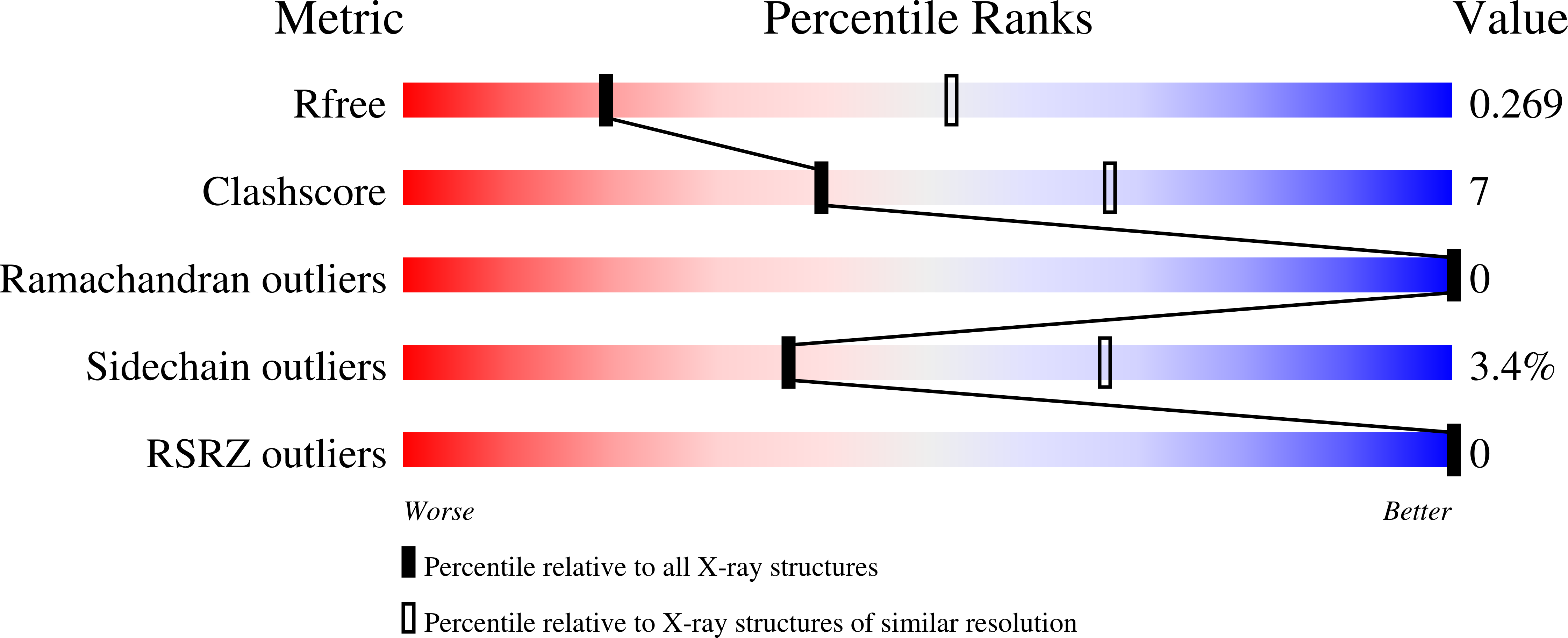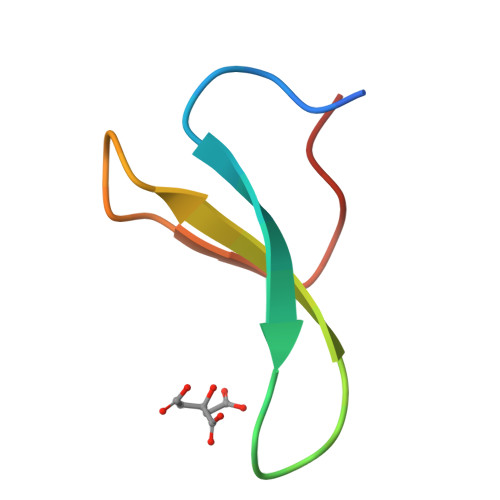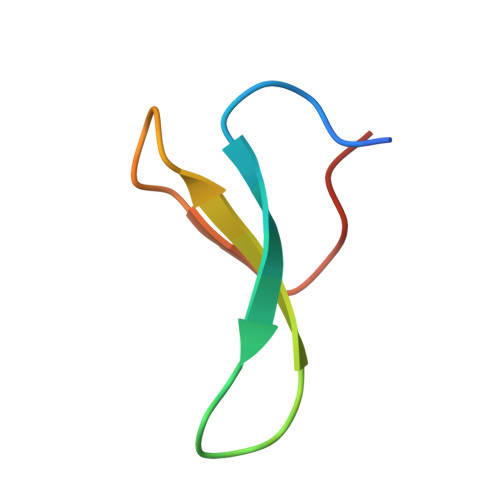Evidence for small-molecule-mediated loop stabilization in the structure of the isolated Pin1 WW domain.
Mortenson, D.E., Kreitler, D.F., Yun, H.G., Gellman, S.H., Forest, K.T.(2013) Acta Crystallogr D Biol Crystallogr 69: 2506-2512
- PubMed: 24311591
- DOI: https://doi.org/10.1107/S090744491302444X
- Primary Citation of Related Structures:
4GWT, 4GWV - PubMed Abstract:
The human Pin1 WW domain is a small autonomously folding protein that has been useful as a model system for biophysical studies of β-sheet folding. This domain has resisted previous attempts at crystallization for X-ray diffraction studies, perhaps because of intrinsic conformational flexibility that interferes with the formation of a crystal lattice. Here, the crystal structure of the human Pin1 WW domain has been obtained via racemic crystallization in the presence of small-molecule additives. Both enantiomers of a 36-residue variant of the Pin1 WW domain were synthesized chemically, and the L- and D-polypeptides were combined to afford diffracting crystals. The structural data revealed packing interactions of small carboxylic acids, either achiral citrate or a D,L mixture of malic acid, with a mobile loop region of the WW-domain fold. These interactions with solution additives may explain our success in crystallization of this protein racemate. Molecular-dynamics simulations starting from the structure of the Pin1 WW domain suggest that the crystal structure closely resembles the conformation of this domain in solution. The structural data presented here should provide a basis for further studies of this important model system.
Organizational Affiliation:
Department of Chemistry, University of Wisconsin-Madison, Madison, WI 53706, USA.

















